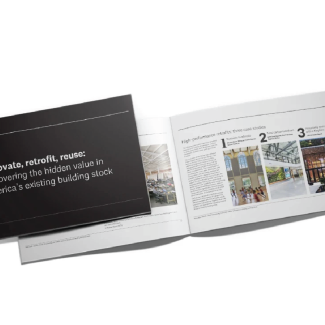AIA-CLF Embodied Carbon Toolkit for Architects
Explore a three-part resource designed to empower and provide architects and designers with the necessary steps to take to reduce embodied carbon in their projects.

Architects & embodied carbon
Reducing the environmental impact of projects has long been a key consideration in the architecture community, from increasing operational energy efficiencies to supporting the electrification of buildings. Now, in the face of climate change, addressing embodied carbon is crucial in meeting decarbonization roles. The architecture profession can lead the way in going beyond operational carbon, the emissions associated with the energy used to operate the buildings, through addressing embodied carbon within their projects as well. Embodied carbon refers to the greenhouse gas emissions that are associated with materials and construction processes over the entire life cycle of a building.
Currently, the building industry generates almost 40% of annual CO2 emissions, illustrating that if significant reductions are taken, this industry can be a key leader in reaching decarbonization targets. Embodied carbon alone accounts for 11% of global annual emissions and is connected to issues of public health and equity. It is imperative that embodied carbon becomes a focus of emission reductions within the industry. By tackling embodied carbon in their projects, architects can drive significant change, working towards a zero-carbon, equitable, and healthy built environment for all.
The AIA-CLF Embodied Carbon Toolkit for Architects serves to provide architects with an overview and the necessary steps to be taken to reduce embodied carbon in their projects. This resource is divided into three parts, introducing the necessary steps and resources to take in reducing embodied carbon. This resource intends to empower building designers by:
- Introducing embodied carbon and discussing its significance in furthering architects’ influence in decarbonizing the building industry.
- Providing an understanding of measuring embodied carbon through the methodology of a life cycle assessment.
- Equipping them with strategies to reduce embodied carbon in their own projects.
- Incorporating additional resources for implemented strategies and tools that this resource examines.
Download Part 1: Introduction to embodied carbon
Download Part 2: Measuring embodied carbon
Download Part 3: Strategies to reduce embodied carbon
Earn AIA LU, HSW, and RIBA credits with AIAU’s 12-part series on embodied carbon.

